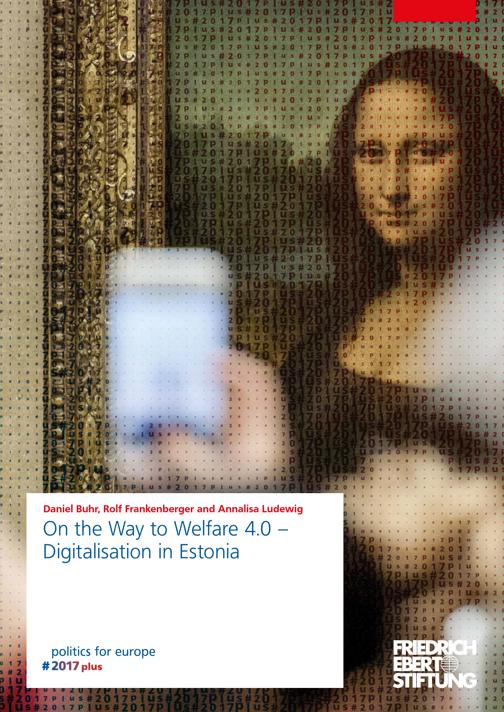Publikationen der StiftungOn the way to welfare 4.0 - digitalisation in Estonia Titel
Titelaufnahme
- TitelOn the way to welfare 4.0 - digitalisation in Estonia
- OriginaltitelAuf dem Weg zu Wohlfahrt 4.0 - Digitalisierung in Estland
- Verfasser
- Körperschaft
- Erschienen
- Umfang1 Online-Ressource (5 Seiten)
- SpracheEnglisch
- SeriePolitics for Europe #2017 plus
- DokumenttypDruckschrift
- Schlagwörter (LOCAL)
- Schlagwörter
- Geografika
- ISBN978-3-95861-713-1
- URN
- Das Dokument ist frei verfügbar
- Nachweis
- Archiv
The growing digitalization permeates almost every aspect of our economic, societal and political life. In many places, this development causes rapid changes that inevitably affect welfare states as well. Digitalization, amongst other things, changes how states and governments offer social services, how participation in the labor market and in politics and society is organized or how the demand of health services conforms to these developments. No thorough research has been done yet on the consequences of digitalization in modern welfare states and their ability to adapt to a "welfare 4.0". In this context, the following questions have to be raised: What are the effects of digitalization on healthcare systems and the labor market? How far have each of the welfare states advanced? Which other developments can be expected? How do political actors and stake-holders react within the realm of their respective policy fields? In order to answer these questions, a study called "On the Way to Welfare 4.0?" was conducted by a group of researchers from the University of Tübingen on behalf of the Friedrich-Ebert-Stiftung. The study deals with these questions based on a comparison of three policy fields � labor market, health and innovation policies � in seven European countries: Estonia, France, Germany, Italy, Spain, Sweden and the United Kingdom. It also explores which ideas, innovations or trends can be expected from central political actors and stake-holders within the realm of their respective policy fields. The following publication is part of this comparative study and illustrates in detailed chapters how far the digitalization has progressed in each of the states examined.
